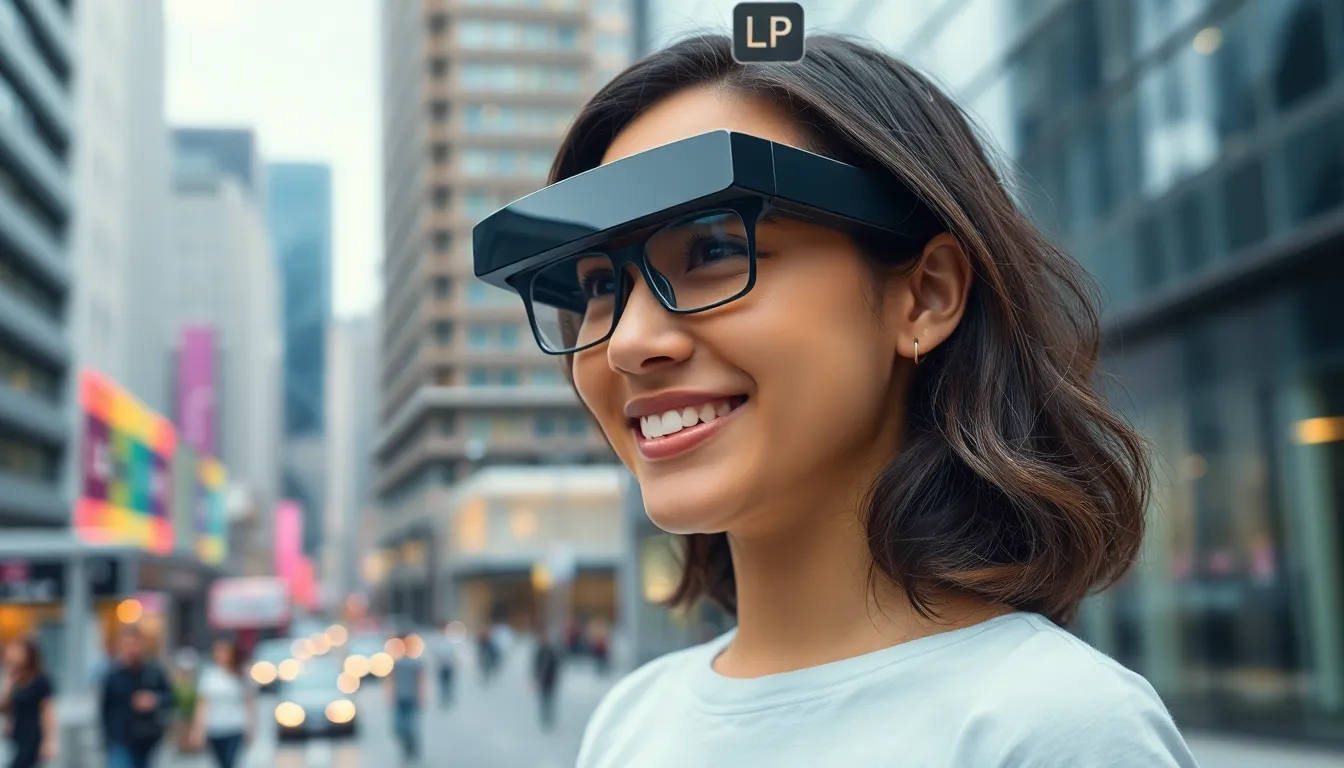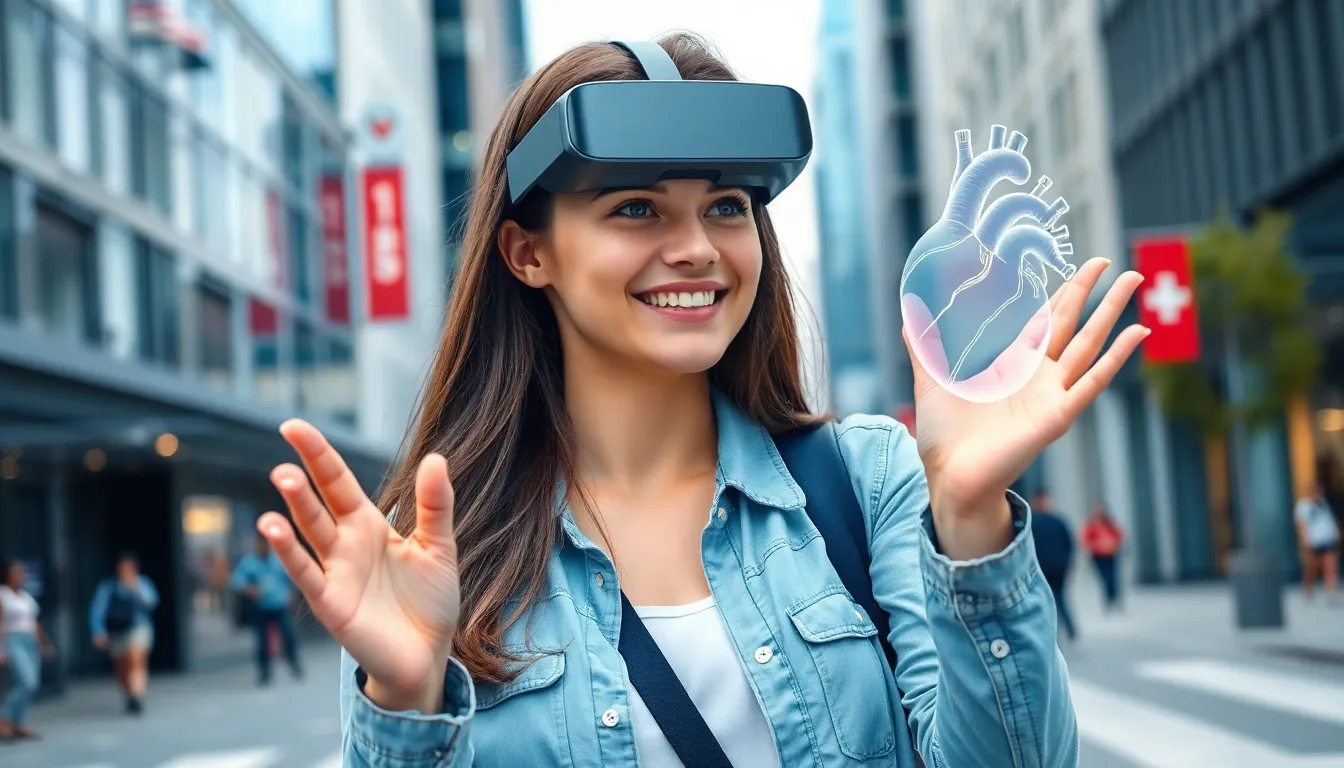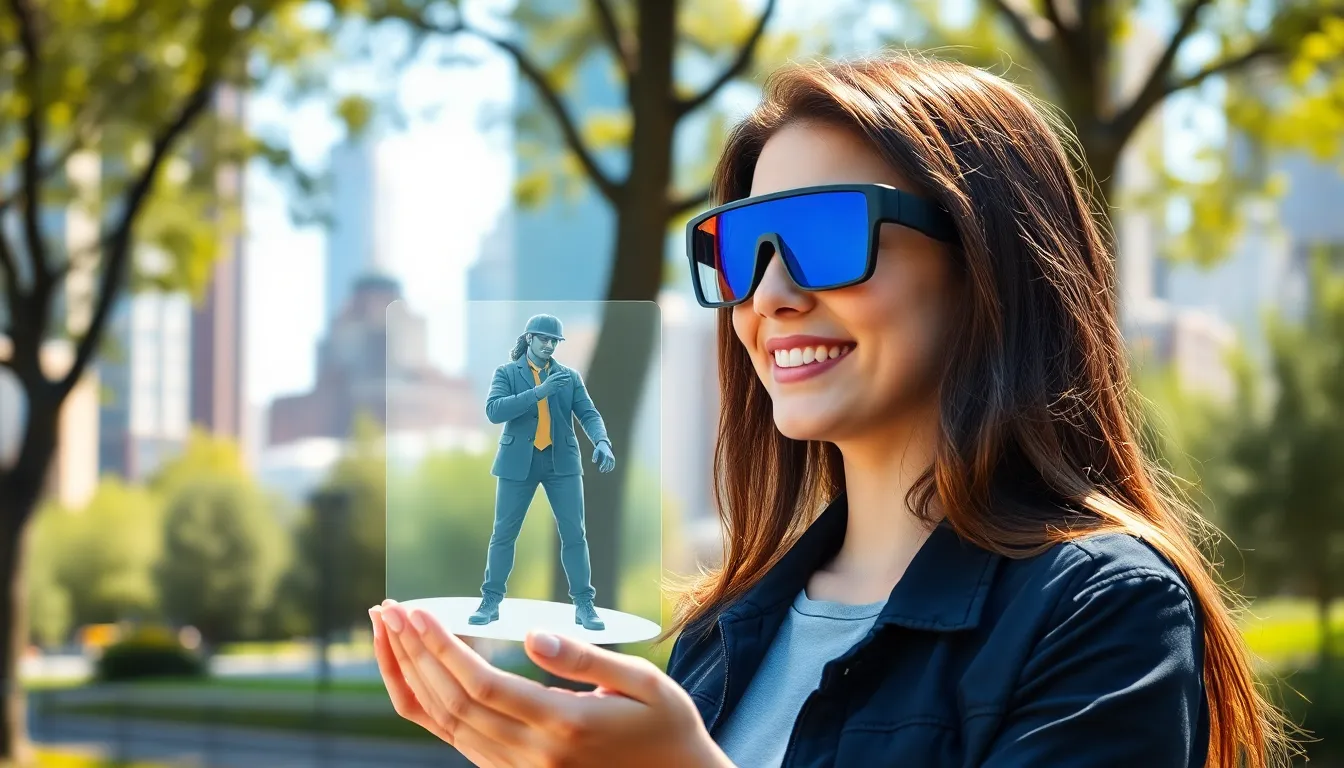Augmented Reality (AR) isn’t just for gamers and tech enthusiasts anymore; it’s transforming how everyday people interact with the world. Imagine trying on shoes without leaving your couch or visualizing that new couch in your living room before making a purchase. With AR, users are not only engaging with products but also rewriting the rules of shopping and social interaction.
But what drives this behavior? Is it the thrill of seeing a virtual unicorn prancing around the living room or the sheer convenience of not having to deal with pushy salespeople? Understanding user behavior in AR is crucial for businesses looking to tap into this rapidly growing market. As users embrace this immersive technology, it’s essential to decode their motivations, preferences, and quirks. After all, in a world where reality can be enhanced, knowing how users think can make all the difference.
Table of Contents
ToggleOverview of User Behavior in AR
User behavior in Augmented Reality (AR) reflects evolving trends in digital interactions and consumer preferences. Engaging experiences attract users’ attention, encouraging them to explore AR applications. These experiences often involve placing virtual items in physical spaces, enhancing users’ understanding of products.
User motivations vary significantly, with many individuals drawn to novelty and entertainment. For instance, AR provides interactive features that captivate users, making the shopping process enjoyable and unique. Social interaction also plays a crucial role, as users frequently share their experiences with friends through social media platforms.
Research indicates that AR can significantly influence purchasing decisions. About 71% of consumers expressed a preference for shopping experiences that incorporate AR capabilities. Users often rely on AR to visualize how products fit into their lifestyles before making a commitment.
Additionally, user engagement levels are impacted by the quality of AR experiences. High-quality graphics and seamless interactions lead to increased usage frequency and satisfaction. Those who find AR applications intuitive are more likely to incorporate them into daily routines.
Tracking user behavior patterns provides valuable insights for businesses. Identifying features that delight users helps companies refine their offerings. Data-driven decisions enable developers to optimize AR experiences for specific demographics.
Understanding user behavior in AR enhances businesses’ ability to connect with consumers. By focusing on motivations, preferences, and engagement patterns, companies can create tailored experiences that resonate in this dynamic landscape.
Factors Influencing User Behavior in AR

User behavior in Augmented Reality (AR) varies based on several key factors that play significant roles in engagement and decision-making. Understanding these factors helps businesses effectively tap into AR tools.
Environmental Context
Environmental context greatly affects how users interact with AR applications. Features such as lighting conditions, physical space, and surrounding distractions shape the overall experience. Bright, well-lit areas enhance AR visibility, while cluttered spaces may hinder proper interaction. Users often find immersive experiences more enjoyable when they align with their physical environment. Contextual relevance becomes crucial; for instance, AR apps tailored for home design perform best when users explore their own living spaces. Additionally, the integration of AR into public settings encourages spontaneous engagement, as users interact freely with the presented content.
User Demographics
User demographics significantly influence how individuals interact with AR technology. Age, gender, and tech-savviness impact user preferences and comfort levels. Younger users tend to embrace new technologies quickly, often seeking out novel AR experiences. Conversely, older users may require more guidance to navigate AR applications. Gender differences also play a role; research shows that men and women prefer distinct features in AR shopping experiences. Understanding these demographic trends enables businesses to tailor their offerings, ensuring they resonate with target audiences. Specific strategies, such as simplifying interfaces for older users or focusing on visual appeal for younger audiences, enhance user engagement in AR environments.
Emotional Responses to AR Experiences
User reactions to Augmented Reality (AR) experiences encompass a range of emotions and experiences that shape interactions in this medium. Understanding these emotional responses helps businesses enhance engagement and satisfaction.
Engagement and Immersion
Users display heightened engagement when AR applications create immersive experiences. Approximately 71% of individuals prefer shopping with AR capabilities, indicating strong interest in engaged interactions. Immersive AR can transform environments by allowing users to visualize products in real-time, syncing virtual elements with their physical surroundings. Fun, interactive features keep users exploring longer, fostering emotional connections to products. Emotionally charged experiences become memorable, resulting in increased brand loyalty and repeat interactions. Successful AR implementations can lead to satisfaction that directly influences purchasing decisions, enhancing overall user experience.
Novelty and User Interest
Curiosity drives user interest as AR technology presents novel experiences. Users often seek unique interactions that differ from traditional shopping methods. Innovative applications, such as virtual try-ons or personalized visualizations, create excitement and draw individuals into exploring products further. Users remain attracted to the entertainment value that AR brings, encouraging social sharing and recommendations. Interesting AR experiences not only captivate audiences but also elevate brand perception by showcasing a commitment to cutting-edge technology. The novelty factor frequently leads to increased engagement and user retention, solidifying AR’s role in modern shopping experiences.
User Interaction and Navigation in AR
User interaction in Augmented Reality (AR) relies on intuitive techniques that enhance engagement. Touch gestures allow users to manipulate virtual objects directly, making the experience feel natural. Voice commands provide an alternative interaction method, enabling hands-free navigation, which is essential in complex environments where users juggle multiple tasks. Moreover, gaze-based controls let individuals interact by simply looking at elements, adding another layer of accessibility. The diverse array of interaction techniques enhances the overall user experience and encourages deeper exploration of AR applications.
Interaction Techniques
Gestural interactions form the foundation of many AR applications. Users manipulate virtual items through swipes, taps, or pinches. Voice commands enable seamless navigation, allowing users to issue instructions without manual input. Gaze control also fosters interaction, permitting users to engage just by looking at specific targets. Intuitive user interfaces enhance these techniques, making AR experiences easy to understand and use. Users experience increased satisfaction when interaction methods feel fluid and responsive, leading to more frequent use.
Usability Challenges
Despite advancements, usability challenges persist in AR environments. Users may face difficulties with tracking accuracy, especially in cluttered or poorly lit spaces. Occasional misalignment between virtual objects and physical surroundings can disrupt immersion. Complexity in user interfaces also poses hurdles, particularly for those less accustomed to technology. Users often require straightforward guidance to navigate features effectively. Addressing these challenges improves the overall experience and can lead to higher satisfaction rates and prolonged engagement.
Applications of AR and User Behavior Insights
Augmented Reality (AR) significantly impacts various sectors, providing valuable insights into user behavior. These applications enhance interactions and drive engagement across gaming, entertainment, education, and training environments.
Gaming and Entertainment
AR transforms gaming experiences, immersing players in interactive environments. Gamers enjoy the enhanced reality that AR offers, allowing them to explore virtual worlds integrated into the real one. Approximately 60% of gamers express interest in AR-based gaming, highlighting its appeal. Many players turn to AR for social engagement, sharing gameplay on platforms like Twitch and YouTube. This communal aspect fosters a sense of connection among users, driving the popularity of AR titles. High-quality graphics and intuitive controls elevate user satisfaction, making these gaming experiences more enjoyable and memorable.
Education and Training
Educational institutions leverage AR for immersive learning experiences. Students benefit from visualizing complex concepts, improving retention and understanding. Research shows that 85% of educators using AR report enhanced student engagement. Interactive simulations enable learners to practice real-world skills in a safe environment. Professionals in fields like medicine and engineering utilize AR for hands-on training, reinforcing theoretical knowledge. Teachers find that AR applications cater to various learning styles, making them effective tools for diverse classrooms. Users engage more deeply with content through these applications, transforming traditional education methods.
The evolution of user behavior in Augmented Reality is reshaping how individuals interact with products and experiences. As AR continues to integrate into various sectors, businesses must stay attuned to user motivations and preferences. The demand for immersive and engaging experiences is clear, with users increasingly seeking unique interactions that enhance their shopping journeys.
Understanding the emotional responses and environmental factors influencing user engagement is essential for companies aiming to thrive in this competitive landscape. By leveraging insights from user behavior patterns, businesses can create tailored AR experiences that resonate with consumers and foster brand loyalty. The future of AR lies in its ability to connect with users on a deeper level, making every interaction memorable and impactful.






